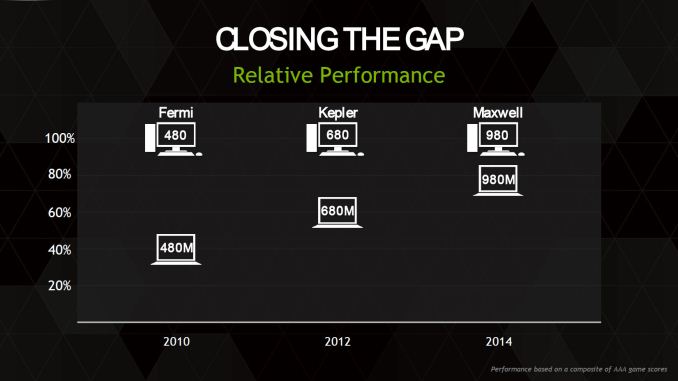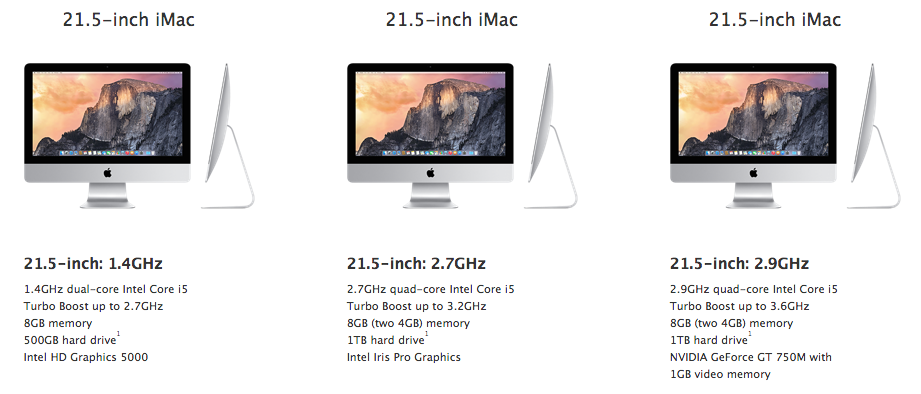Perhaps it is just wishful thinking, but...
I've just had a thought, and the thought is this: I believe that there will be not just one, but two newly redesigned Mac laptops this year. They will follow along the traditional two lines: the Air series, which focuses on being highly lightweight and portable, and the Pro series, which focuses on performance.
Apple has been very good at keeping secrets last year (part of the whole 'doubling down on secrecy' initiative that Tim Cook embarked on). Thus the idea of 2 Mac portables being redesigned for the year isn't too far fetched.
In addition, the retina(?) MacBook Air 12" was supposed to be launched late last year. Unfortunatley, due to yield issues, the Intel Broadwell line of processors failed to launch according to schedule. As a result, the redesigned MacBook Air had to be pushed to 2015. This means that the release of the redesigned MacBook Air may clash with the potential release of a redesigned MacBook Pro.
Looking back at the timeline of physical redesigns of the rMBP... it tends to be redesigned every 3-4 years. The redesigned tapered iPad Mini led to a corresponding change in design language with the iPad Air, which then was transferred onwards to the iPhone 6 and 6 Plus. Similarly, the redesigned MacBook Air would herald the beginnings of a new MacBook Pro.
In addition, the release of nVidia's Maxwell series graphics card, which has very promising performance, suggests that a redesigned retina MacBook Pro would be necessary to support the new graphics cards (through greater heat reduction mechanisms). The new fanless cooling technology introduced in the MacBook Airs would then be used (possibly alongside traditional fan-based cooling mechanisms) for this purpose.

There remains, however, the pressing question of whether Apple will use the opportunity of a hardware redesign in order to accommodate for further graphical performance. After all, only one configuration in the MacBook Pro series retains a discrete graphics card, which suggests that the discrete graphics cards (in Apple portables) is on its way out.

However, the importance of discrete graphics cards remains. Despite the various advances in mobile-integrated graphics, the existence of 'retina'-level screens results in a demand for high graphical performance: performance that can only be provided by discrete graphics cards (as seen in both the discrete graphics cards for the new retina 5K iMac, and the graphical performance problems that the first generation retina MacBook Pros suffered).

The new nVidia Maxwell graphics cards will be able to support the current retina-level demands, and improve in graphics-intensive tasks like gaming (leading to better framerates, adequate performance at higher graphical fidelity, ...).
However, the heat dissipation mechanisms in the retina MacBook Pro 15" may need to be improved, and as such, calls for a new hardware design to accommodate this need.
If, however, the argument is that Apple has long moved beyond using discrete graphics cards in their Mac portables, and that all future retina MacBook Pros will be using the Intel Iris Pro graphics card, then the argument for the inclusion of discrete graphics card (for higher graphical performance) is down to the difference between the two series: Air and Pro.

Apple has used different hardware levels (i5–i7, integrated–discrete, ...) to differentiate between different pricing levels (as seen above). By mandating for the inclusion of a discrete graphics cards (even if it is just for the 'flagship'/'ultimate' model of the retina MacBook Pro, at the highest price point), the difference between the Air and the Pro series will be clear. With the MacBook Air series, consumers will be getting a very lightweight and portable device, while consumers who want performance will go for the Pro series.
Overall, the case for a redesigned (retina) MacBook Pro is strong, and the likelihood of there being two Mac portables being redesigned this year is strong.
Update (10/1/2015): Turns out that the 980M and the 970M requires too much power, in which case, is really unlikely to appear in a retina MacBook Pro 15", unless a radical new redesign happens. Hm.
Update (16/2/2015): Actually, the situation might not be that dire after all. Razer has recently refreshed their Razer Blade (second generation, if I recall correctly) with more RAM and (more importantly) the GTX 970M. This means that the nVidia Maxwell-class graphics card is indeed possible for a form factor like the current retina MacBook Pro, and even more plausible with a redesign (possibly with a new cooling system).